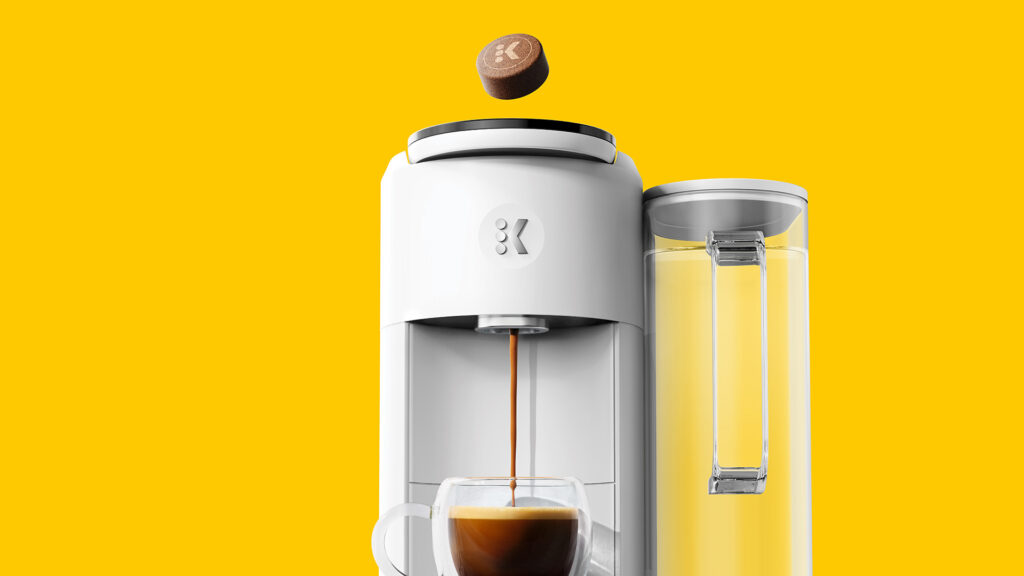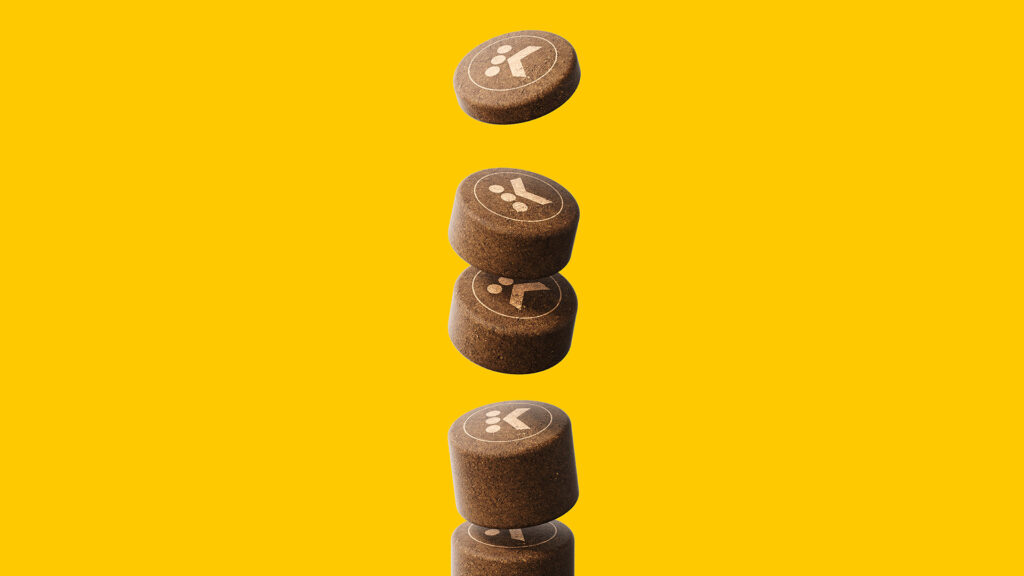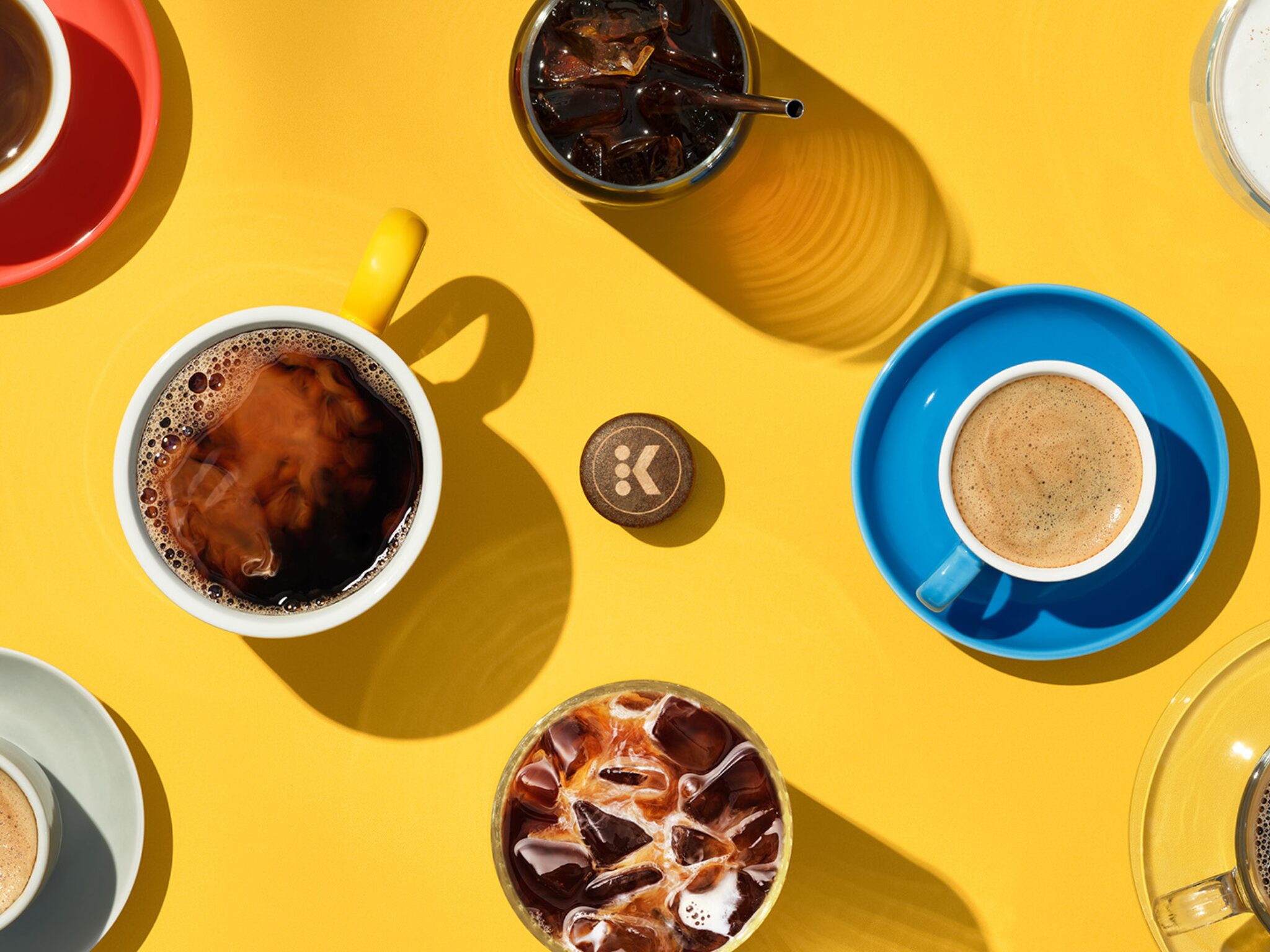5 Mins Read
US coffee company Keurig, one of the world’s largest coffee pod producers, has introduced K-Rounds, a line of plant-based, fully compostable capsules, alongside a new machine, which are slated for launch in 2025.
Next year, Keurig Dr Pepper will roll out the first iteration of its future vision. One of the most popular coffee pod makers, the company is hoping to solve these products’ waste problem by eschewing the terminology entirely. Out with the pods and the capsules, in with the rounds, it seems.
K-Rounds – Keurig’s newest innovation – are free from plastic and aluminium, instead opting for a 100% compostable plant-based cellulose coating that is so thin, it’s invisible. With this, it becomes the latest company tackling coffee and pods’ big climate problems, following in the steps of market leader Nespresso and large retailers like Migros.
“Thirty years ago, Keurig changed the way consumers brewed coffee, with the introduction of the K-Cup pod single-serve coffee system,” said Keurig Dr Pepper CEO Bob Gamgort. “Today, we are applying all our expertise to create a revolutionary new system that will redefine how consumers will brew coffee for decades to come.”
Keurig’s K-Rounds blend sustainability with functionality

According to emissions intelligence agency DitchCarbon, Keurig scores a measly 8 out of 100 in its sustainability score, which is a framework built upon over 30 emissions metrics. It suggests that the company has a high carbon intensity with room for significant improvements in climate-friendly practices. DitchCarbon suggests that Keurig’s emissions performance is over 27% worse than its peers in the beverage industry.
Clearly, change is needed, and fast. The K-Rounds are Keurig’s way of doing that, with the company expecting the product to become certified backyard-compostable by the time it comes to market. The catch, though, is that these new coffee pods can’t be used in any existing machine – they are only compatible with a new coffee brewer being launched alongside, called Alta.
Alta does have a separate chamber so consumers can still use the old pods, but the new ones – said to be the result of a multi-year innovation – can similarly allow them to brew at both high pressure for espresso-based drinks and low pressure for drip coffee, whether it’s hot or cold. The functionality attributes are key. The K-Rounds come in different quantities and grind sizes, marked with a code from food-safe inks for the Alta to recognise and deliver proper pressure, extraction and flavour. Think single or double espresso, light or dark roasts, and so on.
As for product life, the new coffee pucks are said to be shelf-stable for up to six months, though once opened, they’ll be good for 30 days before their quality begins deteriorating. This is thanks to the coating around the coffee grounds. The cellulose offers some flavour and aroma protection properties, but on its own, it would be insufficient for a long shelf life. This is why Keurig is working on recyclable secondary packaging, which will also have barrier protection.
“We’re working through the dynamics of the secondary packaging materials, exactly how much barrier protection that provides, and then how we package that up in terms of the product counts; the numbers of the pods per secondary pack,” Phil Drapeau, senior vice-president of future coffee systems at Keurig Dr Pepper, told PackagingWorld. “Those will be the numbers and the balances that will need to come together.”
He noted that the company “certainly doesn’t want to go down a secondary packaging path that is not easily recyclable for consumers”, adding that it will eventually conduct a full life-cycle assessment (LCA) to truly measure its climate impact: “We’re a little ways off from LCA. It’s clearly on our radar screen, and we know how important that’s going to be to take a holistic look. The focus started with end of life [of the packaging], to meet consumers’ needs, and then working our way back from there.”
The need for a climate-friendly coffee industry

Keurig will begin beta-testing its K-Rounds this autumn, gathering feedback and insight from retailers and coffee partners to refine and optimise the product ahead of its broader market launch for consumers, potentially in 2025.
“Our ambitious agenda reflects our commitment to providing variety, quality, value, and sustainability to the 45 million North American coffee consumers who currently use Keurig brewers and the millions of potential new households who will discover the benefits of a perfect cup of coffee prepared effortlessly in their home,” said Gamgort.
On average, packaging makes up around 30% of individual coffee capsules, which research suggests contribute to more planet-heating emissions than other brewing methods. A separate study labels coffee pods as among the worst forms of human waste for the climate in terms of long-term damage. This is because, despite many of these products being recyclable, they end up in landfill.
Coffee pods are responsible for 576,000 metric tons of waste produced every year. The issue was highlighted by Nespresso USA’s sustainability head, Anna Marcina, in an interview with NPR last year, where she revealed the business spends over $35M per year on a coffee capsule recycling system – but only 36-37% actually gets recycled in the US.
This is why alternatives like Keurig’s K-Rounds are crucial. Compostable coffee pods are slowly becoming the norm, with many coffee companies producing biodegradable capsules compatible with existing brewers from the likes of Keurig and Nespresso. The latter itself introduced paper-based coffee pods that are home-compostable in 2022.
It’s part of a larger movement to lower the coffee industry’s complicated relationship with climate change. It is amongst the highest-emitting foods globally, and the effects of the climate crisis have put 60% of the world’s coffee species, including arabica, under the threat of extinction. Meanwhile, the amount of land suitable for coffee-growing could be halved before 2050, reducing yields and consequently driving up prices.
So, packaging is just one problem. Coffee the commodity itself is a whole other issue. Some are coming up with climate-resilient ways of producing these beans, such as French crop genetics startup Amaterra, and Israeli lab-grown coffee producer Pluri. On the other hand, companies including Northern Wonder, Atomo and Prefer are eschewing coffee altogether, instead using fermentation techniques on crops like carob, chicory and lupin beans, and agricultural sidestreams such as date pits, surplus bread, and spent brewer’s grain to produce beanless coffee alternatives.




